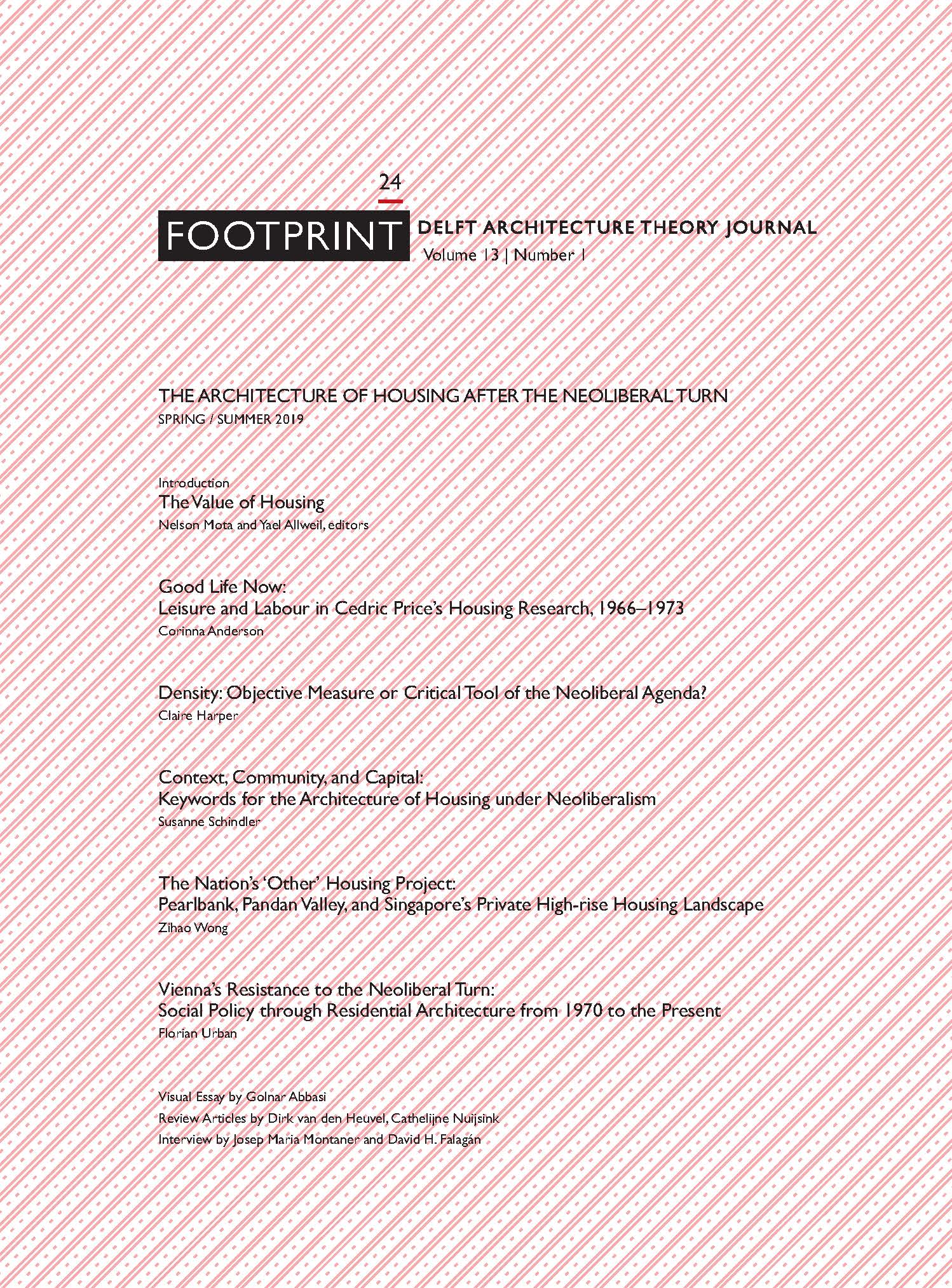The Common Apartment
DOI:
https://doi.org/10.7480/footprint.13.1.2403Abstract
The house, having always been the locus of socio-political struggles of Tehrani citizens, after the Iran-Iraq war gradually came to materialise many more complex issues. It became a space and a structure embodying the state’s subjugating agenda, forces of the housing market, its labour and material market, the desires of the people, their political action, and architectural practitioners’ attempts to prove relevant. This visual essay focuses on three threads in Tehran in housing in the the post-Iran-Iraq-war context: the liberalising procedures and regulatory frameworks that still constitute the most common form of housing, positing middle class citizens as the main players in the market; the architectural repercussions of the regulating mechanisms and the subsequent formation of a homogenised form of housing; and a reading of these forms of housing as sites of people’s practices of resistance in a framework of constant re-appropriation.
Downloads
Published
Issue
Section
License
- Authors retain copyright and grant the journal right of first publication with the work simultaneously licensed under a Creative Commons Attribution License that allows others to share the work with an acknowledgement of the work's authorship and initial publication in this journal.
- Authors are able to enter into separate, additional contractual arrangements for the non-exclusive distribution of the journal's published version of the work (e.g., post it to an institutional repository or publish it in a book), with an acknowledgement of its initial publication in this journal.




